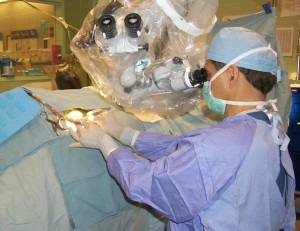Latest Studies Show Spine Pain Treatments Must Change
 Two important studies were published in February that have provide further evidence that many common treatments for spine-related pain are ineffective. This comes as no surprise since back pain remains the most common reason people seek out medical care besides the common cold.
Two important studies were published in February that have provide further evidence that many common treatments for spine-related pain are ineffective. This comes as no surprise since back pain remains the most common reason people seek out medical care besides the common cold.
The first study, from Australia, investigated all the world’s scientific articles for studies on the use of NSAIDS (non-steroidal anti-inflammatory drugs) to relieve back and neck pain. They found 35 studies that compared both prescription and over-the-counter NSAIDs, like Motrin(R), Advil(R), Naprosyn(R) and Celebrex(R), to placebos (sugar pills) to relieve spine pain. They concluded the following:
“NSAIDs are effective for spinal pain, but
the magnitude of the difference in outcomes between
the intervention and placebo groups is not clinically
important.
At present, there are no simple analgesics (like NSAIDS)
that provide clinically important effects for spinal pain
over placebo. There is an urgent need to develop new
drug therapies for this condition.” (1)
In 2014, Americans spent about $44 billion on O.T.C. drugs which was largely made up of NSAIDs. The study did not look at other types of pain, but there is little doubt much of these costs are to help spine pain sufferers. The use of NSAID medications is not without risks. They have significant side effects, including bleeding ulcers, kidney or liver damage and an increased risk of a heart attack or stroke. Overdoses of acetaminophen result in 30,000 hospitalizations annually, often because of acute liver failure. Unwittingly many people exceed the safe limit of 4,000 milligrams of acetaminophen over a 24-hour period. Although, short term use of these medications is considered safe, very few people adhere to the 3 to 10 day recommended limit for chronic use.
(1) Machado GC, et al. Ann Rheum Dis 2017;0:1–10. doi:10.1136/annrheumdis-2016-210597
 In the second recent study, the American College of Physicians (ACP), did an even larger review of various treatments for low back pain and concluded that physician prescribed pain medications are overprescribed and mostly ineffective for low back pain. This is an important conclusion and has resulted in three significant recommendations for physicians to change their practice of medicine when it comes to using powerful pain pills, like opiates. They provided three practice recommendations, with the first perhaps being the most important:
In the second recent study, the American College of Physicians (ACP), did an even larger review of various treatments for low back pain and concluded that physician prescribed pain medications are overprescribed and mostly ineffective for low back pain. This is an important conclusion and has resulted in three significant recommendations for physicians to change their practice of medicine when it comes to using powerful pain pills, like opiates. They provided three practice recommendations, with the first perhaps being the most important:
“Recommendation 1: Given that most patients with
acute or subacute low back pain improve over time regardless
of treatment, clinicians and patients should select
nonpharmacologic treatment with superficial heat
(moderate-quality evidence), massage, acupuncture, or
spinal manipulation (low-quality evidence). If pharmacologic
treatment is desired, clinicians and patients should
select nonsteroidal anti-inflammatory drugs or skeletal
muscle relaxants (moderate-quality evidence). (Grade:
strong recommendation)”(2)
The bottom-line is treatments like exercise, massage and other non-drug treatments can help and should be considered first!. In this article the authors provide the scientific studies that demonstrated the benefits of lifestyle choices and changes shown to improve most cases of low back pain:
“Exercise, multidisciplinary rehabilitation, acupuncture, mindfulness-based stress reduction, tai chi, yoga, motor control exercise, progressive relaxation, electromyography biofeedback,
low-level laser therapy,operant therapy, cognitive behavioral therapy, or spinal manipulation”(2)
Of course, if these were universally effective there would be no need for spine surgery, which can be life saving when all else fails. The key is to notify your healthcare provider if spine pain persists. There are signs and complaints that could indicate a more significant problem, such as radiation of pain into the legs or associated bladder or bowel complaints.
Avoiding the overuse of prescription opiate pain medication was addressed in the third recommendation from ACP. Here is a selection from this recommendation:
“Clinicians should only consider opioids as an option in patients
who have failed the aforementioned treatments
and only if the potential benefits outweigh the risks for
individual patients and after a discussion of known risks
and realistic benefits with patients.”(2)
These two studies, along with my own experience using dietary supplements, such as omega-3 fish oil and other natural anti-inflammatories, to help patients with inflammatory spine pain, has convince me that the practice of medicine must change. The use of often highly addictive pain pills should not be the first line of treatment for all types and causes of spine pain. I welcome these studies and recommendations and believe healthcare providers will start to change from “prescription pad” medical care as the first line of treatment.




 Dr. Maroon received an athletic scholarship to Indiana University in Bloomington, Indiana where as an undergraduate, he was named a Scholastic All-American in football. Dr. Maroon has successfully maintained his personal athletic interests through participation in 9 marathons and more than 72 Olympic-distance triathlon events. However, his greatest athletic accomplishment is his participation in 8 Ironman triathlons (Hawaii – 1993, 2003, 2008, 2010, 2013; Canada – 1995; New Zealand – 1997; Germany – 2000), where he usually finishes in the top 10 of his age group. Recently, in July 2012 and 2013, he finished second and third, respectively, in his age group in the Muncie, Indiana half Ironman triathlon. In October 2013 he completed his 5th World Championship Ironman in Kona, Hawaii.
Dr. Maroon received an athletic scholarship to Indiana University in Bloomington, Indiana where as an undergraduate, he was named a Scholastic All-American in football. Dr. Maroon has successfully maintained his personal athletic interests through participation in 9 marathons and more than 72 Olympic-distance triathlon events. However, his greatest athletic accomplishment is his participation in 8 Ironman triathlons (Hawaii – 1993, 2003, 2008, 2010, 2013; Canada – 1995; New Zealand – 1997; Germany – 2000), where he usually finishes in the top 10 of his age group. Recently, in July 2012 and 2013, he finished second and third, respectively, in his age group in the Muncie, Indiana half Ironman triathlon. In October 2013 he completed his 5th World Championship Ironman in Kona, Hawaii.